Vietnam: What are the trigonometric formulas in the triangle and solution of triangles in the 10th-grade Mathematics program? What are the regulations concerning the roadmap for improving the standardized educational qualifications of lower secondary school teachers?
What are the trigonometric formulas in the triangle and solution of triangles in the 10th-grade Mathematics program in Vietnam?
- Below are the trigonometric formulas in the 10th-grade Mathematics program in Vietnam:
Trigonometric formulas in the 10th-grade Mathematics program:
1. Law of cosines:
- In any triangle, the square of one side equals the sum of the squares of the other two sides minus twice the product of those two sides and the cosine of the angle between them.
For triangle ABC where BC = a, AC = b, and AB = c
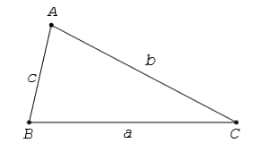
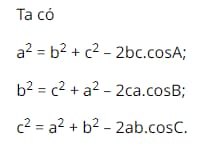
Consequence:

2. Law of sines:
- In any triangle, the ratio of a side to the sine of the opposite angle is equal to the diameter of the circumcircle.
For triangle ABC where BC = a, AC = b, AB = c and R is the radius of the circumcircle.
We have:

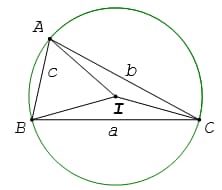
3. Length of a Median:
For triangle ABC where ma, mb, mc are the medians from A, B, C, respectively.
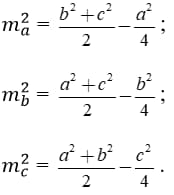
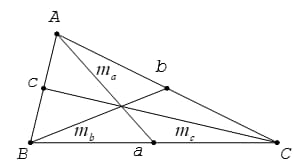
4. Solution of triangles:
- Calculating the lengths of sides and angles of a triangle when certain elements are known is called solving the triangle.
Note: The above information on trigonometric formulas in the triangle and solution of triangles in the 10th-grade Mathematics program in Vietnam is for reference only.
Students should listen to lectures and read further in textbooks to fully understand the concepts of trigonometric formulas in the triangle and solution of triangles in the 10th-grade Mathematics program in Vietnam.
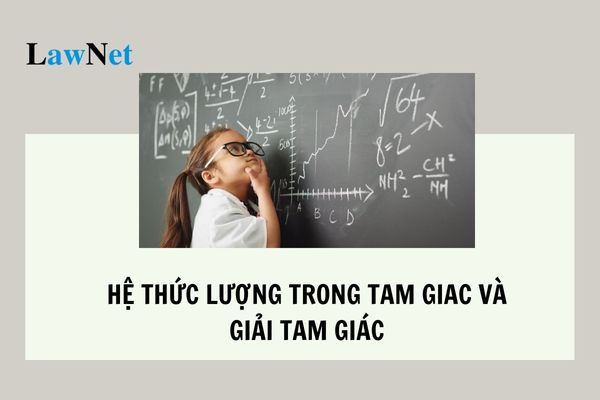
What are the trigonometric formulas in the triangle and solution of triangles in the 10th-grade Mathematics program? What are the regulations concerning the roadmap for improving the standardized educational qualifications of lower secondary school teachers? (Image from the Internet)
What are the standardized educational qualifications of teachers in Vietnam?
According to Article 72 of Education Law 2019, the standardized educational qualifications of teachers in Vietnam are regulated as follows:
- Teachers of preschool education teachers must possess at least a pedagogical college diploma;
- Teachers of primary education, lower secondary education and upper secondary education must possess at least a bachelor’s degree in pedagogy training.
In case a subject is yet to acquire enough teachers with bachelor’s degree in pedagogy training, teachers of this subject must possess a bachelor's degree of suitable specialization and a certificate of pedagogy training;
- Lecturers of higher education must possess a master’s degree; lecturers teaching or instructing master's or doctor’s theses must possess a doctoral degree.
- Standardized educational qualifications of teachers working in institutions of vocational education shall follow regulations in the Law on Vocational Education.
What are the rights and responsibilities of teachers participating in training courses on standardized educational qualifications in Vietnam?
The rights and responsibilities of teachers participating in training courses on standardized educational qualifications in Vietnam are specified in Article 10 Decree 71/2020/ND-CP as follows:
- Rights of teachers sent to participate in training courses on improving the standardized educational qualifications:
+ Be facilitated by management and employment authorities in terms of time; be eligible for financing of tuition fees (applies according to current legal regulations for educational students);
+ Have the training duration included in continuous tenure;
+ Be entitled to 100% salary and applicable policies, allowances as prescribed by law.
- Responsibilities of teachers sent to participate in training courses on improving the standardized educational qualifications:
+ Comply with training regulations, and rules about training time; under the administration of the training institution during participation in training activities;
+ Commit to performing tasks at preschool education or general education institutions for at least twice the training period after completing the training program;
+ During the course period, teachers must continue to fulfill their work responsibilities according to regulations when not engaged in training activities;
+ Where teachers fail to complete the program within the specified time, resulting in extended training time, they must personally cover any additional training expenses incurred during the extended period.

